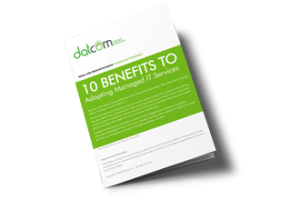In a strong labor market, it takes a lot for a business to stand out. When job seekers are on the hunt, they may comb through hundreds of postings in a week. What are they looking for?
They want a good fit for their skills and experience. But they’re also looking for the same thing you’re looking for in an applicant’s resume: something gripping.
It’s a good idea to ask yourself: “What’s going to make my ideal hire slow their scroll and sit up straight like they just drank a double shot of espresso?”
Simply put, you want to be the kind of company that resonates with job seekers. A company that registers as a “destination workplace.”
What is a Destination Workplace?
You’re probably familiar with destination weddings and destination retailers. A destination wedding promises a unique and exceptional experience for everyone involved. It raises expectations and summons people to get in shape and buy new outfits so that they can glide into a fairytale.

Likewise, a destination retailer is much more than the sum of its parts. For instance, Buc-ee’s is a travel stop that turns a detour into a destination. It draws travelers young and old with almost supernatural allure for its snacks and souvenirs. People talk about Buc-ee’s, but rarely in terms of specific products. It promises an entire oasis of creature comforts for road-trippers.

Like a destination wedding venue or travel stop, you want your company to be a workplace of promise for talented people. A company they’ll be proud to claim in casual conversation with friends and family.
But we’re not just talking about brand recognition and marketing pizzazz, although that certainly helps. And this goes way beyond writing good copy for job postings. We’re talking about companies who act like their employees are their most valuable asset, and it shows.
It shows in the way employees represent the company. It shows in the kinds of opportunities that open before them from the outset of their journey. The best employees aren’t just seeking a paycheck, but personal refinement and destination workplaces promise that in the form of development and training.

For 70 percent of employees, learning opportunities are a top 3 motivator for working at a company right behind salary and job growth potential. Rounding out this set of priorities is an overall feeling that their job aligns with their own values.
Assuming that your salary and benefits are competitive and your products improve life in ethical ways, what else can you do to attract qualified people?
Foundational Vision
The difference between ordinary and high-caliber individuals is the ability to set goals based on a clear vision for their lives and reach them. The same is true for businesses. Unfortunately, many small businesses languish in “day-to-day” mode because leaders don’t harness the power of vision. They don’t inspire employees to strive for long-term business goals. Either they don’t have clearly defined goals, or they don’t communicate them effectively and frequently.
The big myth about vision and goals is that it’s not worth establishing them because they might be “wrong.” Or, they might have to admit to followers that the initial vision wasn’t perfect. Longing to hit a home run, they never step up to the plate. But the only way to hit a home run is to step up. And the great news is that you can start today and hone your vision until it’s just right for 3-5 years of growth.

Once you have an initial vision, set goals or perform a SWOT analysis. Then, clearly communicate 1-year, 3-year, and 5-year goals to your staff. It’ll catch, and you’re on your way to creating a destination workplace.
Training for Staff Enhancement
Training is any focused employee development effort that empowers people to do their job. But training should take them further than their job description into other departments and leadership experiences. Not only to pave the road for advancing their career, but to knit your entire workforce into a unified team. This allows them to see their roles from new angles and minimize inefficiencies that slow their team members down.
Ironically, higher education is a great example of cross-training compared to many businesses. It’s become popular to criticize colleges and universities for failing to prepare students for “real-world” experience and productive jobs. While it’s true that some degrees are not directly related to profitable business, there’s a much more explicit focus on interdisciplinary learning in most degrees today. Most people don’t find that at work.

Regular training helps people learn how to learn. Lifelong learners have a larger mental map for connecting siloed departmental areas of a company. Training connects previous educational experiences with current work experiences.
If you’re looking to draw workers with exceptional skill sets, invest in training because it speaks volumes to lifelong learners with exponential potential.
Workplace Culture
Many small businesses will say that the company is “like family.” In quite a few instances, they literally are a family. Some aspects of family life are good in a business. It’s great to feel like you belong, but there are some key differences that will likely harm your business in the long run.
A business is not like a family because you will eventually have to let people go. More importantly, it can produce an atmosphere where people aren’t reaching their full potential and business goals are sacrificed. True professionalism cannot thrive where people let their hair down. Families don’t evaluate their members on objective criteria and aren’t concerned about efficiency.

Families develop people for their own sake. Businesses develop people for the sake of the business itself. It’s a higher calling that individuals accept as they move from their family of origin into the wider world. A business exists to see fruition in that wider world. It does not exist to sustain itself.
What do workers really need in workplace culture and what sets a “destination workplace” apart from the rest?
A healthy workplace culture is supportive, but not in a way that leaves workers weak. Recognize failures early. A true leader is willing to correct mistakes before they get out of hand. Offering support for not making the same mistakes repeatedly will produce gratitude.
A healthy workplace culture will make a clear distinction between individual responsibility and individual methodologies. To succeed, workers will sometimes take risks that are not their responsibility to take. Even if it produces the desired results, it indicates a failure of teamwork.

Open communication is key to making sure that doesn’t happen, but it’s also important that employees make suggestions to improve operations. The cross-training we mentioned earlier is important for elevating the impact of communication. Training them to think like business leaders helps them take ownership, and they’ll be giving you more effective feedback.
At a destination workplace, company victories should be celebrated together, with key contributions earning appropriate recognition. When such celebrations occur, take an opportunity to couch victory within a story that includes recent trials and tribulations. It helps your team recognize the rising and falling action of life at work.
The story of how your company became a destination business can start today with your own reflections as a leader. Today is the day, the opportunity is now!


